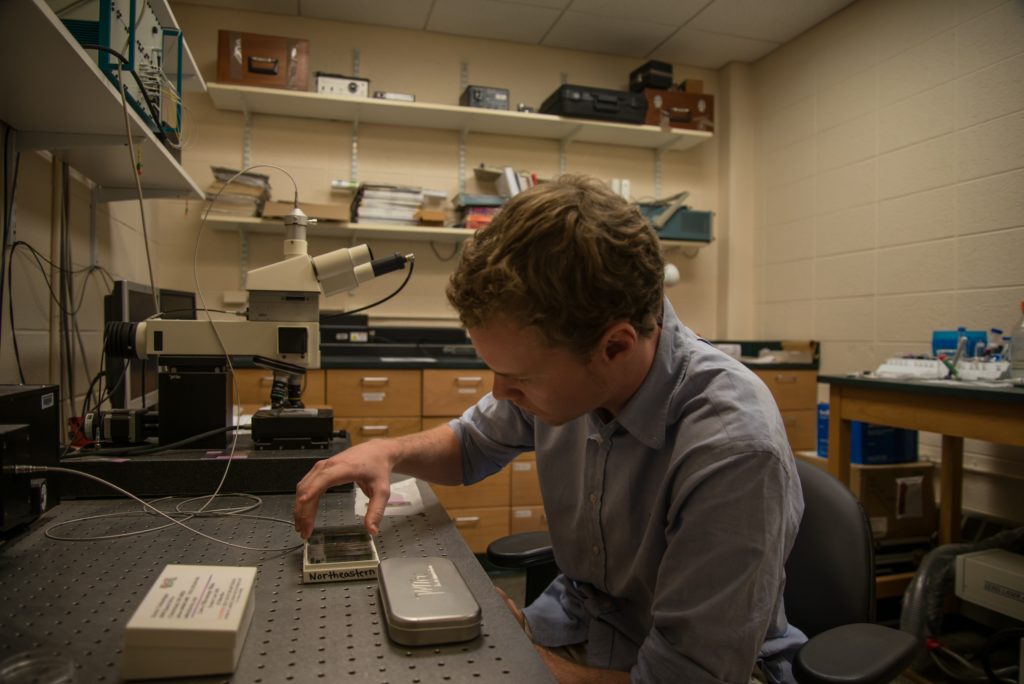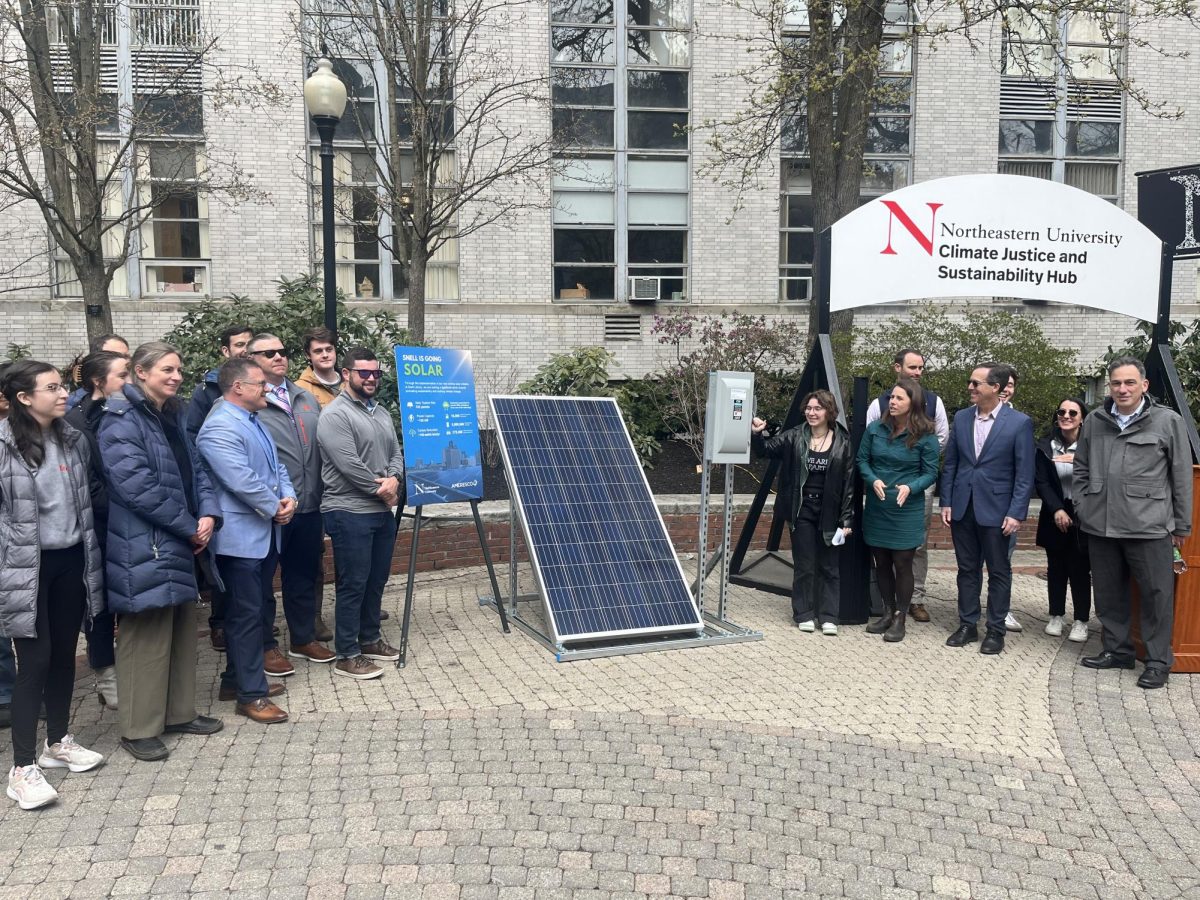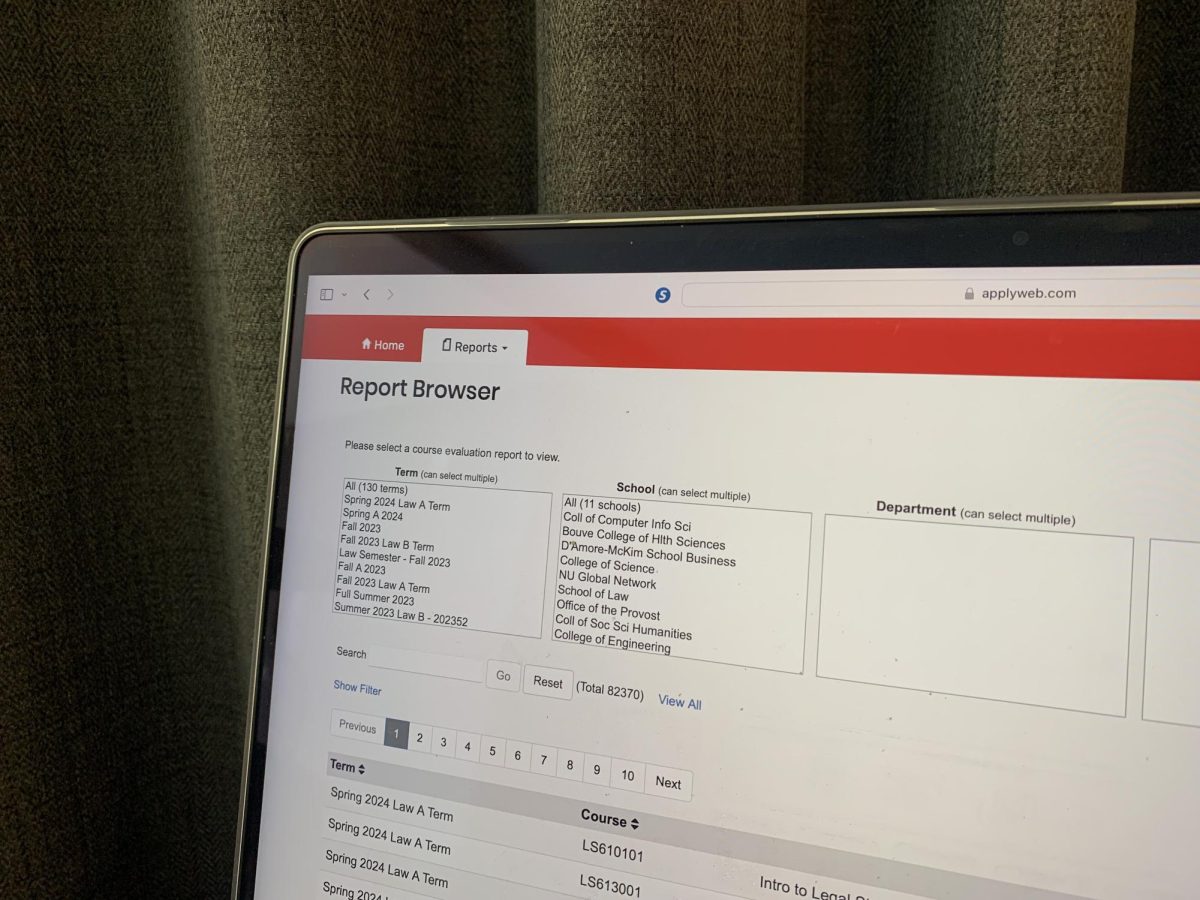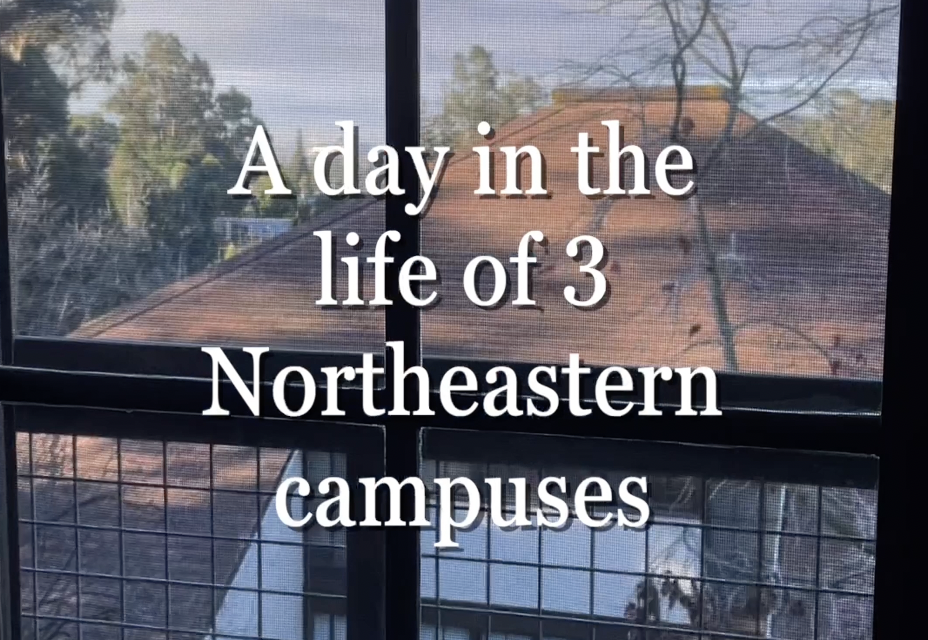By Alexandra Malloy, Deputy News Editor
As stated by the World Health Organization, early detection of cancer greatly is a primary requirement for successful treatment.
Recipient of the 2014 RISE undergraduate award for Physical and Life Sciences, senior chemistry major Douglas Townsend,and Max Diem, professor of chemistry, are pioneering a new form of cancer diagnostics.
“This is my first project that I’ve been working on for a year and a half now,” Townsend said.
The foundation of the project and surrounding research is based on screening patients for disease, using infrared micro-spectroscopy coupled with multivariate statistical analysis, termed spectral pathology. Infrared spectroscopy is the interaction between infrared radiation and matter, and is a well-established technique used in analytical chemistry, as described by Townsend. The research seeks to diagnose disease on a molecular level based on changes in the biochemical composition of cells and tissue during the start and progression of disease.
Townsend has been focusing specifically on the collection of esophageal samples through exfoliation, or the scraping of esophagus cells and testing the cells collected.
“We collaborate with the Gloucestershire NHS Hospital Trust Foundation in Gloucester, U.K. to work on using our technology to screen patients for esophageal disease, mainly Barrett’s Esophagus,” Townsend said. “That’s a condition that’s pre-disposed to carcinogenesis.”
Barrett’s Esophagus is a condition where the tissue of the esophagus is replaced with lining similar to the lining of the intestine, as defined by the Mayo Clinic. The disease leaves patients with an increased risk of developing esophageal cancer.
“It’s a disease that’s increased in prevalence over the past couple of decades and currently there are no solid ways to diagnosis it. It’s one of the worst killers as cancers go,” Townsend said. “If you don’t catch it early the treatment is basically surgical removal of the esophagus and I believe that around 10 percent die in the surgery and over 80 percent will die within five years.”
The partnership with Gloucestershire NHS Hospital has taken the research by Townsend and Diem at Northeastern, and transported it across the ocean to be used with patients at risk or suffering from Barrett’s.
“We’re screening patients for this precancerous condition and with the help of the doctors and researchers over at the Gloucestershire Hospital we hope to establish a clinical application for this technology,” Townsend said. “Right now, our predictive models for esophageal disease operates at over 90 percent accuracy.”
Professor Diem began research on similar medical diagnostics by spectral methods in the mid’ 90s.
“It was 18 years ago and it was impossible to do, neither computation capabilities or instrumental methods were available,” Diem said. “But now we’re at the stage where we can do cancer screening, cancer diagnostics and cancer prognostics.”
Diem is part of a start-up company and has set up a privately funded lab in Cambridge. The company, Cireca Theranostics, LLC, focuses on spectral-based tissue diagnostic technology, as stated on their website, with the goal to bring increased accuracy in the understanding of disease.
Later this year, the start up company plans to have a system to diagnosis lung cancer.
Since Diem started at Northeastern, he and his researchers have received two patents, and he has personally written roughly 60 papers in peer reviewed journals, 10 chapters and one book.
“We’ve previously tested for oral cancers and oral diseases,” Diem said. “We had a campus-wide pre-clinical trial for volunteers for oral cancer and oral disorders, and before that we worked with the pathology department at Tufts University for cervical cancer screening.”
The research that Diem and Townsend have done in the past year and a half has taken the two across the ocean to the SPEC 2014 conference. SPEC 2014, Shedding New Light on Disease, was held in Krakow, Poland over the summer and aims to bring together both clinicians and scientists who have research in infrared spectroscopy and apply research to both clinical and medical application.
“It was amazing to see all these leading scientists and doctors in this field working together to determine the best way to get this technology into the hospitals,” Townsend said. It was truly an incredible learning experience.”
Townsend is currently writing a paper on his recent research, which he plans to submit to the British journal published by the Royal Society of Chemistry, Analyst, on which he should be listed as the first author. Townsend anticipates graduating this upcoming spring and either plans on going to medical school or applying to an MD-PhD program.
“What we’re doing just has a huge potential to aid in screening and diagnosis for better patient care and treatment for those diseases that are hard to diagnose and can be asymptomatic,” Townsend said. “It just has a lot of potential.”
Photo by Arzu Martinez




















